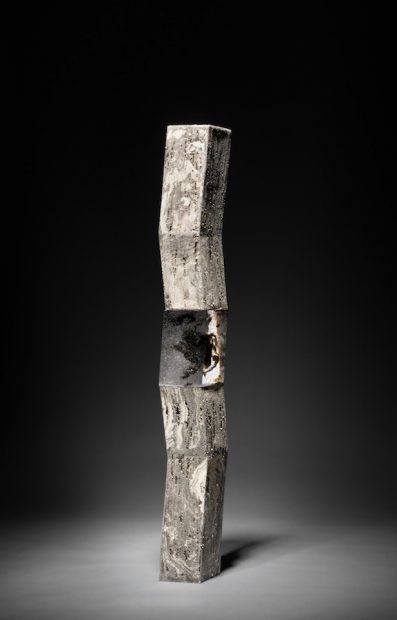
Kondo Takahiro (b. 1958), Jishinha (Seismic Wave), 2016. Marbleized porcelain with metallic glaze and cast glass 43.3 x 6.3 x 4.7 inches. Carol and Jeffrey Horvitz Collection. Photo by Richard Goodbody, courtesy of Joan B Mirviss
If I ask that you imagine the color blue, you’ll each conjure a different hue. Cerulean or lapis or a sun-flecked aqua pool. Rumi limned the notion of art reviews when he remarked, “What the Self describes describes the Self.” It’s a lovely way of explaining that the art reviews any of us write are sagas of collusion: There is the thing (A) and what it becomes when it is apprehended (B). Thus, the 14th-century Persian poet quite neatly offers us a trenchant epistemological lesson regarding what we learn and relearn constantly.
Art is never ours, but we pretend that is when we’ve been captured and made helpless by its beauty. So I’ll make a preemptive strike, so to speak, and ask your forgiveness for the narrowness of my vision with regard to this particular show at the Crow in Dallas, titled Hands and Earth: Contemporary Japanese Ceramics.
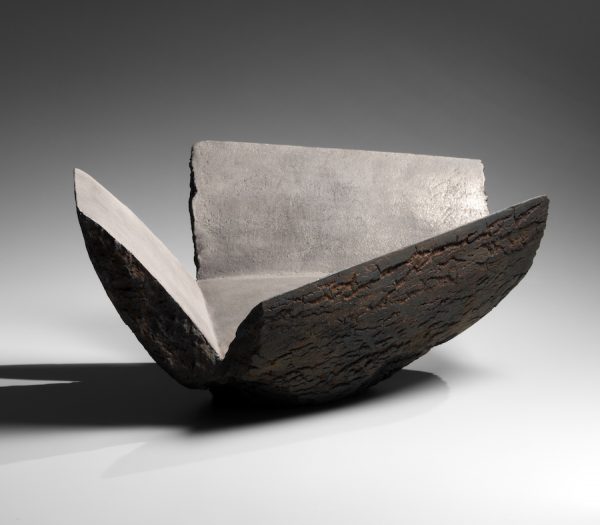
Akiyama Yo (b. 1953), Untitled, MV-155, 2015. Unglazed stoneware with silver coating, 9 5/8 x 22 3/8 x 15 inches. Carol and Jeffrey Horvitz Collection. Photo by Richard Goodbody, courtesy of Joan B Mirviss
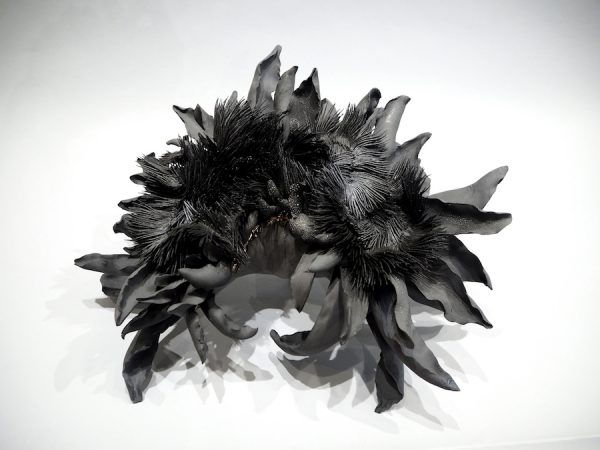
Shingu Sayaka (b. 1979) Erosion, 2014. Black and gray toned stoneware. 7.8 x 16.5 x 14.3 inches. Carol and Jeffrey Horvitz Collection. Photo by Yuko Weiner, courtesy of Dai Ichi Arts
Here’s the thing: I am irretrievably smitten by Kondo Takashiro’s Seismic Wave — it’s exactly what the name suggests. (Pictured at top.) It’s a glistening trope for what earthly materials become when lavished with fastidious yet theatrical genius. It’s lovely as a small cathedral, a kind of ziggurat of pain and perfectly calibrated blue solace. I’ve rarely seen anything I’ve loved so much that wasn’t tall and blonde. It gives off a hip yet coolly contrived heat I can hardly bear. Moreover, it’s simple. It’s pared back such that it delivers a refinement that is so exquisite precisely because it withholds so much and, thus, one easily surmises it’s quintessentially Japanese.
The piece measures only slightly more than 43 inches tall and roughly 5- to 6-inches across. Pictures don’t begin to do it justice. However, it does what all great sculpture does: it constellates a space and causes a new orbit to begin with it as its center. Seismic Wave undulates more gracefully than any anthropomorphic hip swivel and is punctuated by cast glass that is a thoroughly drenched blue. It’s a private Mediterranean flanked by porcelain sporting a majestic and metallic glaze — and it would be remiss to fail to note that its primary reason for being is to express to us how lovely the world can be. You must see it in person.
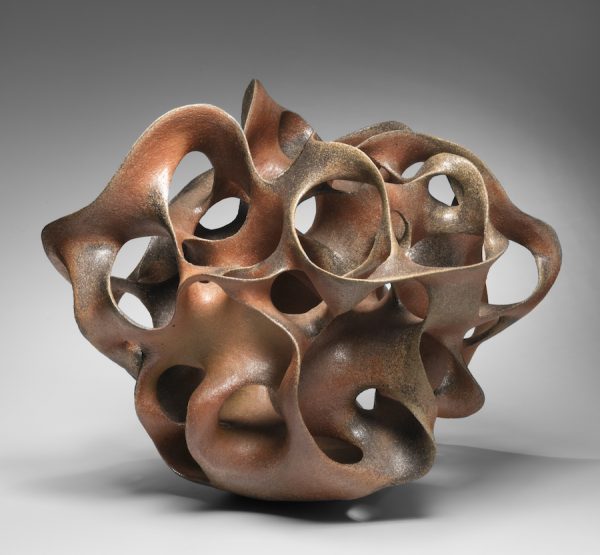
Kurokawa Toru (b. 1984), Protocell-E, 2016. Stoneware with ash glaze, 19 1⁄2 x 25 x 20 1⁄2 inches. Carol and Jeffrey Horvitz Collection. Photo by Richard Goodbody, courtesy of Joan B Mirviss
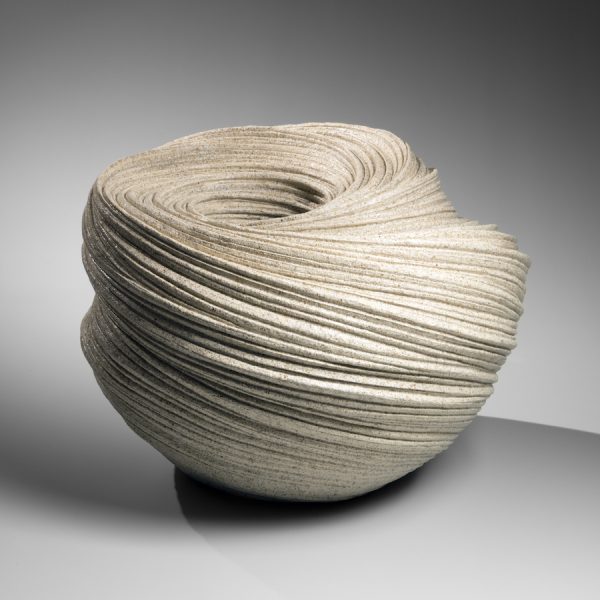
Sakiyama Takayuki (b. 1958), Ch t (Listening to Waves), 2016. Sand-glazed stoneware, 14 1⁄2 x 19 3⁄4 x 19 1⁄2 inches. Carol and Jeffrey Horvitz Collection. Photo by Richard Goodbody, courtesy of Joan B Mirviss
The show, of course, offers plenty of other marvelous works by contemporary Japanese masters of the medium. Kurokawa Toru gives us Protocell-E, a curling stoneware piece with ash glaze that invokes a consideration of inside versus outside, as well as perhaps the conundrums that are invoked in both the natural (and psychological) worlds. Listening to Waves by Sakiyama Takayuki is an infectiously elegant work invoking rhythm and a controlled vocabulary of watery ebb and flow.

Kato Tsubusa (b. 1962) Object, 2006. Porcelain with celadon glaze 35 x 24 inches. Carol and Jeffrey Horvitz Collection. Photo by Saiki Taku, courtesy of Dai Ichi Arts
And so, we are back to water. Or, more precisely, to blue. Find your own favorite work. There’s plenty to plunder here.
Through Jan. 5, 2020 at the Crow Museum of Asian Art, Dallas



4 comments
I enjoyed reading this review. Makes me want to take on I-35, drive to Dallas to visit the Crow Museum!
Beautifully written! Definitely makes me want to go check this exhibit out.
It’s a great show, there is also an exhibit of contemporary ink on fabric work by Shen Long. It’s like nothing I’ve seen. A Buddhist hand creates landscapes, portraits, and calligraphy that evoke Kiefer and Murakami while documenting the spiritual moment of the artist.
I saw this show yesterday with a group of graduate students. It’s stunning. The fabric work is also incredible, and as James said, it’s also something I’d never seen before. I’m more than willing to fight the traffic and go back.